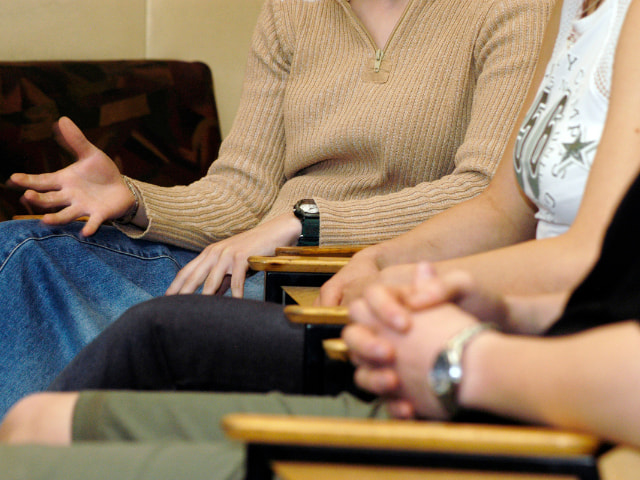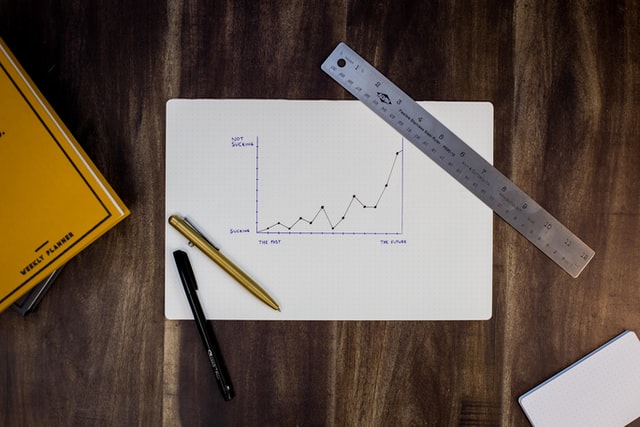25 Common Body Language Examples in Action
 Chloe Martin
·
7 minute read
Chloe Martin
·
7 minute read
(Updated May 2024)
Body language types can be easy to overlook.
But they offer us clear clues and indications of thoughts, feelings and emotions without saying or hearing one word.
Making body language vital to any social interaction, especially in professional settings.
In this article, we will cover what nonverbal cues are, 25 common body language types and some examples in action.
Contents:
- What are Nonverbal Cues?
- 25 Common Types of Body Language
- How to Read Body Language
- Examples of Body Language Types in Action
- Can Body Language Be Used to Your Advantage?
What Are Nonverbal Cues?
Nonverbal cues are unspoken signals that are used to communicate an action or feeling with another person.
Examples of nonverbal communication cues include:
- Facial expressions (there are many facial expressions used sometimes intentionally or unintentionally, but all of them express something). Quick fact: Research shows that the human face has 43 muscles which can make up to 1,000 facial expressions.
- Head tilts (can indicate you're trying to listen or pay attention)
- Eye contact or movement (wide eyes often mean surprised or shocked)
- Hand gestures (moving your finger up to your mouth can indicate the need for silence or to stop talking)
- Posture (slouched posture can show a lack of energy or motivation)
- Eyebrow or mouth movements (a raised eyebrow can show suspicion of a person or situation)
- Touch (think about a strong or weak handshake)
- Crossed legs (can either indicate a person feels relaxed or is defensive)
- Pursed lips (this could indicate either anger or deliberation)
The list could go on. But we'd be here for a while longer!
All these forms of nonverbal communication cues give you an insight into how a person feels and demonstrates to others how you are feeling. This gives us the opportunity to react or change our behaviour accordingly.
You might be interested in our blog: Why is Nonverbal Communication Important in the Workplace?
Not using nonverbal cues in the workplace might leave you misunderstood and others confused about your true thoughts. But we understand they can be hard to spot and know the majority of meanings used widely in or outside the workplace. That's why we've listed 25 common types of nonverbal communication examples below to help.
25 Common Types of Body Language
So, what is the role of body language in communication? Here are 25 common types of body language listed in groups to show the importance of reading body language and calculating what feeling it could mean:
Aggressive Body Language
- An overly firm handshake.
- Invading personal space.
- Hands-on hips or legs too wide.
- Maintaining eye contact to the point of staring.
- Aggressive physical movements like finger-pointing.
Defensive Body Language (Closed Body Language)
- Crossed arms or legs.
- Avoiding eye contact.
- Leaning away.
- Hunched shoulders.
- Eye rolling
Nervous Body Language
- Biting nails.
- Fidgeting.
- Coughing.
- Weak handshake.
- Putting hands on head.
Bored Body Language
- No or lack of eye contact.
- Excessive fidgeting.
- Yawning.
- Shifting weight and sitting uncomfortably.
- Rubbing face.
Engaged Body Language (Open Body Language)
- Good eye contact.
- Confident stance.
- Positive gestures.
- Nodding in agreement.
- Smiling. Another quick fact: Did you know there are actually 12 different types of smiles, learn more about what they are and mean.
Body language isn’t an exact science and someone who’s feeling bored or engaged might not show all of the traits listed above.
However, when speaking to someone, keep an eye on their nonverbal signals. Their stance, body movement, tone of voice and eye contact can help give you a better understanding of how they perceive you.
How Effective is Communication Through Body Language?
Communicating through body language can be powerful. It can help you to adjust your behaviour and influence how your words are perceived by others.
Think about this example. You're interviewing for a new role in another department. Although you may already know the people who are interviewing you, show you're listening and interested in the position by nodding your head, using eye contact and leaning forward.
In comparison to another candidate who sits back with their arms crossed and looks around the room seeming bored, your use of body language will put you on top - even if what the other candidate says is better.
Your body language is a strong reflection of your attitude.
Read more on why is body language important.How to Read Body Language
Now that you know how many different body language types there are, it's time to learn how to read them and understand what to look out for. Understanding body language can be challenging since everyone uses it differently. But don't worry, here are four valuable tips to help you read body language:
1. Do their verbal and nonverbal cues match?
Verbal communication and nonverbal cues such as body language should match if someone is truly being honest with their thoughts. For example, if someone explains how happy they are about a decision but uses closed body language by crossing their arms - this is a sign of inconsistency.
2. What is Open Body Language and Closed Body Language?
When you learn that open body language (e.g. open posture, eye contact) often means someone is comfortable and relaxed, and closed body language (e.g. crossed arms or breaking eye contact) means someone could be under stress or unhappy, things get a little easier.
3. Look at the wider picture
Try not to focus on every little movement a person makes, as this can cause you to over-analyse people and try to understand what they're thinking. Instead, take a step back and look at the wider picture, the environment you're in and the situation.
4. Trust your gut instincts
Sometimes, our intuition can sense subtle cues that we may not consciously recognise. If someone's body language gives you a gut feeling that something is off, it's worth paying attention to and exploring further.
By understanding gestures and interpreting body language, you can gain valuable insights into how others perceive you and adjust your own behaviour accordingly. Whether in professional or personal settings, being able to read and respond to nonverbal cues can greatly enhance your communication skills and help with building trust to create stronger relationships.
For more tips, carry on reading to see examples of open and closed body language in action.
Body Language Examples - In Action
Open Body Language Examples
Watch the below clip taken from The Graham Norton Show. Instead of listening to them discuss llamas, pay attention to their body language. Notice how the guests are sitting and what gestures they make when talking.
Notice how relaxed the guests are? Even though they’re in front of cameras and an audience, they might as well be chatting in a small room by themselves. They’re laid back, at ease and very comfortable.
As Robert Downey Jr begins to speak, he opens his body to include everyone. If he were to just face the host, he’d have his back on some people who would feel excluded. Graham interacts with the screen behind him but turns when speaking to the guests so they can see his face.
Everyone is given their chance to speak and no one person ever dominates the conversation. This is a great example of relaxed, open and positive body language, even in front of an audience.
Closed Body Language Examples
Time for another clip now. Same rules - keep an eye on the body language.
So obviously, football manager Pep Guardiola isn’t happy with a journalist’s question here. What’s interesting is he never raises his voice or uses overly negative language. It’s his gestures and negative body language that really outline how seething he is.
Did you notice how little he blinks as he talks? Go back and have another look. He maintains strong eye contact with the person he’s berating in a kind of showdown sort of way. But that eye contact breaks when he finishes speaking as if he’s disgusted with what he’s seeing.
He seems to be grinding his teeth and almost recoils at the question he’s been asked.
One final example.
So the title is a bit of a giveaway.
This person is understandably nervous before they’re about to sing for an audition. Before she’s told the judges that she’s afraid, it’s easy to spot she's feeling uncomfortable and nervous.
As she walks on stage, her arms are tight to her side and she’s holding her hands. Her shoulders are hunched and she’s almost shrinking into the background. She fidgets as she answers questions and keeps taking deep breaths to try and calm her nerves.
Her voice is quiet and she’s clearly unsure of herself. The crowd can feel her nerves and that has even more of an effect on her.
Then she starts to sing and she’s fantastic. Her body language was warping the audience’s opinion of her before she’d even really gotten started. This shows just how powerful body language can be. It can shape opinions about us no matter what we say.
Have you felt like this during public speaking? Fear no more. Check out our post on the importance of body language during presentations for some good and bad examples.
Can Body Language be Used to Your Advantage?
Simply sitting and looking a certain way doesn't guarantee that you will achieve your desired outcome. The truth is that we can't always control which of our feelings or thoughts are showing and how our body language is perceived by others.
If you make an obvious effort to conceal your emotions, others will probably notice. It's perfectly acceptable to express your emotions, but in a professional setting where you may disagree with something, it's important to manage your negative reactions to avoid being viewed as confrontational or uncooperative.
Can You Overuse Your Body Language?
Yes. It's possible to overuse certain body language elements which can negatively impact your communication and even confuse other people. For example, overusing hand gestures can distract your listeners and take their focus away from your words and to your hands.
Is Body Language a Reliable Form of Communication?
While body language is a powerful form of communication and can help you communicate effectively and understand an individual's feelings, it's not an exact science.
For starters, body language is not a completely universal language. Your interpretation of body language will depend on your culture and individual experiences. For example, in most western countries, sustained eye contact is a sign of confidence and engagement. We assume that if someone breaks eye contact, they may be disinterested. However, in Japanese culture, it is considered rude and disrespectful to maintain eye contain as it is interpreted to be confrontational or aggressive.
Further, neurodivergent individuals may display a different type of body language or struggle with social cues. Therefore, it is important to use emotional intelligence when reading body language as it will vary depending on the individual you are talking to, not just the context.
We're not saying completely disregard everything we've discussed in this blog, however, it is important to consider that body language does vary heavily depending on an individuals' background, culture, mood, energy level and circumstance, so it is important to consider these factors before making any swift judgements.
What is the Importance of Body Language at Work?
Your body language serves as a window to your character, reflecting your enthusiasm, attitude, and overall personality to those around you. By actively displaying positive non-verbal cues, you can enhance your approachability and forge deeper connections with colleagues.
Learn How to Connect with Any Audience Through Body Language
Understand your body language habits, how to engage any audience with confidence and discover what barriers might be stopping you from being assertive. Join our Confident Communications and Assertiveness training course to get started.
2+ years in SEO and content marketing. Striving to help public sector professionals develop their skills and learn something new through high-quality content.




compressed-1.jpg)

